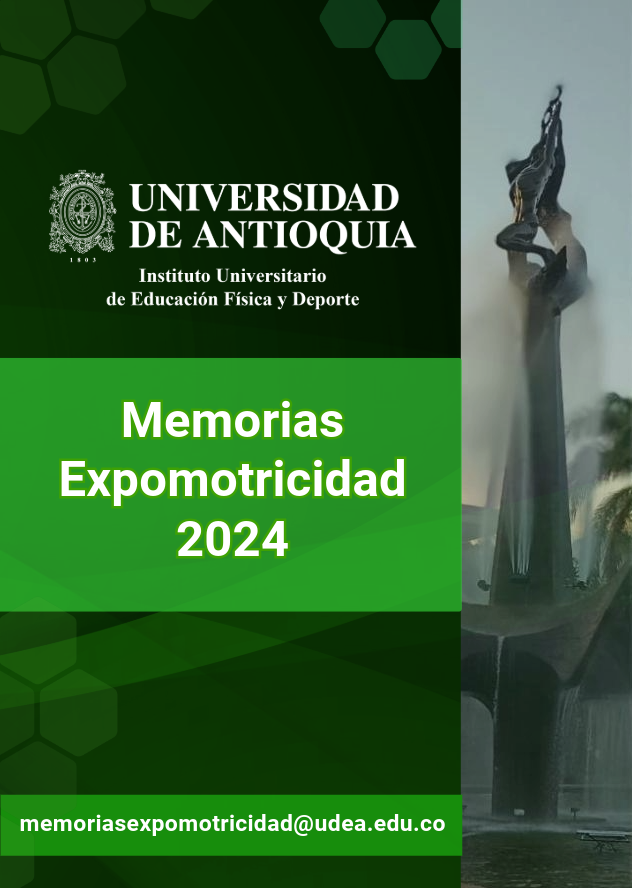The epistemic spiral in bodily pedagogical practices: the resignification of university training in physical education
Keywords:
corporeality, physical education, pedagogy of the body, pedagogy of movement, systematization of experienceAbstract
To write this paper, I'm reflecting on my experience as a physical education teacher at the Corporación Universitaria Minuto de Dios (Colombia), where I carried out a systematization of the experiences of bodily pedagogical practices that relate the students' bodies to their learning process. This systematization of bodily experience addresses two learning scenarios: pedagogy of the body and pedagogy of movement, whose conceptual axis is corporeality. Both scenarios are available as options for all majors at the university. We all know that our body empowers us, ages, gets sick, changes, and is also exposed to a mechanistic world that considers it a simple machine. From here, my intention was to explore with the students their experiences, feelings, and knowledge of the various practices related to the body through the concepts of corporeality and embodiment, both intrinsic and extrinsic, to understand what it means to learn with and from the body. In this context, complexity emerges as one of the key aspects of the spiral concept, which articulates biopedagogy, ethics, and the aesthetics of knowledge. The spiral concept transforms the classical notion of physical exercise and gives it a character of experimentation, exploration, research and play, linking knowledge and permeating our actions, feelings and learning. This experience arises from the need to understand how we function as structures in order to recognize that there are different ways of understanding reality.
Downloads
References
1. Barbero, J. I. (1996). Cultura profesional y currículum (oculto) en educación física. Reflexiones sobre las (im)posibilidades de cambio. Revista de Educación, 311, 13-49. https://www.researchgate.net/publication/236155407_Cultura_profesional_y_curriculum_oculto_en_Educacion_Fisica_Reflexiones_sobre_las_imposibilidades_del_cambio
2. Devís Devís, J. (2000). Actividad física, deporte y salud. INDE.
3. Duch, L., y Mèlich, J. C. (2005). Escenarios de la corporeidad. Antropología de la vida cotidiana. Trotta.
4. Escobar C., M. R., y Cabra A., N. A. (2014). El cuerpo en Colombia: estado del arte, cuerpo y subjetividad. IDEP. https://repositorio.idep.edu.co/handle/001/750
5. Foucault, M. (2008). Vigilar y castigar. Nacimiento de la prisión. Siglo XXI.
6. Grasso, A. E. (2001). El aprendizaje no resuelto de la educación física. La corporeidad. Noveduc.
7. Le Breton, D. (2002). Sociología del cuerpo. Ediciones Nueva Visión.
8. Lyotard, J. F. (1987). La posmodernidad (explicada a los niños). Gedisa.
9. Pedraz, M. V. (1989). Nociones de cuerpo para la teoría general de la educación física. Perspectivas de la actividad física y el deporte, (1), 5-9. https://www.academia.edu/8125067/Nociones_de_cuerpo_para_la_teor%C3%ADa_general_de_la_educaci%C3%B3n_f%C3%ADsica
10. Pedraza Gómez, Z. (1999). En cuerpo y alma: visiones del progreso y de la felicidad. Educación, cuerpo y orden social en Colombia (1830-1990). Universidad de los Andes. https://repositorio.unal.edu.co/handle/unal/55346
11. Starobinsky, J. (1991). Historia natural y literaria sobre la percepción corporal. En M. Feher (Ed.), Fragmentos para una historia del cuerpo humano (pp. 357-389). Taurus.
Downloads
Published
How to Cite
Issue
Section
License
Copyright (c) 2024 Pedro Nel Urrea Roa

This work is licensed under a Creative Commons Attribution-NonCommercial-ShareAlike 4.0 International License.




